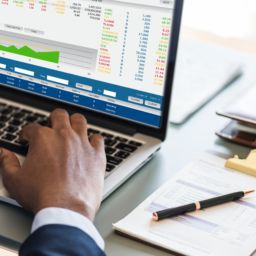
Big Data’s value cannot be understated. In many ways, it serves as the foundation of many fundamental and significant decisions and strategies in the modern business landscape. However, it’s only as good as the outcome you create using it! The misconception in the world of Big Data is that if you have enough of it, you’re already on a sure-fire route to success. This is not exactly true though. Success relies more upon the story that your data tells. It is only through proper data analysis and interpretation that we can find this narrative, use it to fuel change and improvement, and bring organisations to the next level.
What you do with Your Data Matters
Effective data analysis is the key to using information in a constructive way. When looked at from a holistic viewpoint, it reveals the insights you need to further the thinking of your organisation. However, unless you are looking at ALL of your data assetsthere is no proper context. It’s not enough to simply pile data up and hope it sends you a message; you must determine where and how to leverage it to make a big difference.
Part of data analysis is also determining what data you need (and don’t). This helps you set your priorities and ask the right questions, resulting in greater efficiency and less wasted effort. So, what is the right data? It all depends on your goals. We recently posted a blog that discusses this point further.
Delving into data and analysing it properly depending on your needs is how you can discover competitive, data-driven opportunities for your organisation. Simply looking at data from the surface paints a picture that’s far from complete and allows your competitors to derive from it insights which can be developed into advantages before you do.
Building a Competitive Advantage from Big Data
Want to empower your employees to make better decisions that can translate into a competitive advantage? Then you need to understand your data. Gathering and collecting is just one of the steps; you have to also know your goals and what you’re looking for (or at least an idea of it). So, how is what you “see” in your data going to make a difference?
For example, within a logistical supply chain, data on delivery, order, and return processes accessible in real-time can help a company identify opportunities to increase operational efficiency. This data could come from different sources which, when collated and analysed, provide proper context and insights.
However, if data is handled inefficiently, you could encounter problems. For example, different areas within your organisation may not understand how to use or share the data, or bottlenecks in the internal data transfer process may cause discrepancies in data quality and interpretation.
This is an aspect of data siloing or the prevention of the flow of data through and around an organisation. Working with a centralised platform can help to avoid this issue, and also allows all parties to familiarise themselves with and benefit from the insights derived from data. If everyone is just looking at their own small patch of data, then insights might not be as clear, but when viewed together as a whole, its value becomes more apparent. Analysing data in this way using intelligent data management platforms also reduces the reliance on data scientists for interpretation and understanding.
A competitive advantage can be found in actions or processes that produce data, provided that data analysis is approached the right way. An organisation can collect data on the performance of marketing and sales teams and techniques, for example, but this is not where the competitive edge lies; instead, it is in the analysis, interpretation, and implementation of changes and improvements based on the derived insights.
Using Data Analysis to Leverage Big Data
The supermarket chain Tesco PLC examines seemingly unusual data fields in a bid to gain a competitive advantage. Supermarkets, of course, collect a lot of different kinds of data such as customer data, inventory data, delivery data, and employee productivity data. Tesco PLC took this a step further and decided to also look at refrigerator data. They gathered millions of bits of data from its refrigerators and analysed it to measure performance and to better determine when the machines might fail. This helped them achieve proactive servicing and reduce energy costs.
Understanding consumer behaviour is a key goal of many companies, and proper data analysis is a big step towards achieving it. From department stores to banks, organisations want to deliver a better customer experience and journey. The Commonwealth Bank of Australia (CBA) uses Big Data to provide customers a customised search experience on their website which would not be possible without data. The CBA’s process includes analysing data related to preferences, patterns, and actions which are then used to show visitors the most relevant offers for them. This has resulted to an enhanced customer experience for the bank, increasing the likelihood of having more satisfied clients—something that every business wants to have.
Translating data into key business insights isn’t the stuff of magic. We know this because, while magic does not exist, data intelligence does, and it is helping more and more organisations achieve better results and make the right decisions.
As we’ve said, having data is not enough; you also have to find a way to analyse and derive from it the necessary insights you need to drive success. Latize’s data management platform Ulysses brings you a lot closer to achieving just that, harmonising disparate internal and external data to build for you an intelligent web of data you can use to uncover opportunities for growth, improvement, and identifying possible competitive advantages. Click here to know how Ulysses can make your data work for you.



